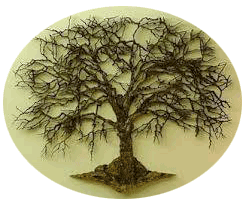Shrinking Floors
All wood is made up of microscopic cells. As moisture leaves these cells, they shrink, creating hairline crevices between the boards. It is normal for the interior home to become dry during the heating season, and somewhat dryer in the later months of February and March. Under these circumstances, expect cracks between the boards about as thick as a dime. Some cracks may become larger, but this would most likely be due to a structural problem, such as a shifting of the beam, loly column and plywood underneath the floors.
Cupping
“Cupping” is when the edges of the board are higher than the middle of the board. This can occur when the bottom (underneath) of the floor encounters moisture. This is often the result of a damp basement or water damage where water as found its way under the floor boards. It is important to wait until the moisture source has been taken care of and the floor has dried and it returns to a normal moisture content; before attempting to have the room sanded and refinished.
Crowning
“Crowning” is the opposite of cupping: The middle of the board is higher than the edges of the board. This can occur when the surface of the floor encounters moisture. It can also result when a floor has been sanded too soon after it has cupped. When this happens, the top edges of the board are sanded off, and thus are lower than the rest of the board when it returns to a normal moisture content.
Buckling
Buckling is one of the most extreme reactions to moisture that can occur with a hardwood floor. It happens when the floor literally pulls away from the sub- floor, up to heights as high as several inches. Fortunately, buckling is an uncommon occurrence, usually happening only after a floor has been flooded.
How To prevent Wood Floor Moisture Damage
Controlling humidity is the most important factor in preventing problems with moisture and your wood floor. Help prevent and resolve moisture problems in the home by using de-humidifiers, humidifiers, sub-pumps and cellar ventilation.
- Use de-humidifiers when moisture levels are high (especially summers)
- Use humidifiers to add moisture to the air when it is dry (especially during
heating season). - Basement Ventilation helps remove moisture (open windows or by
mechanical means). - Sealing basement floors is sometimes necessary to prevent moisture from
newly poured or damp concrete floors).
